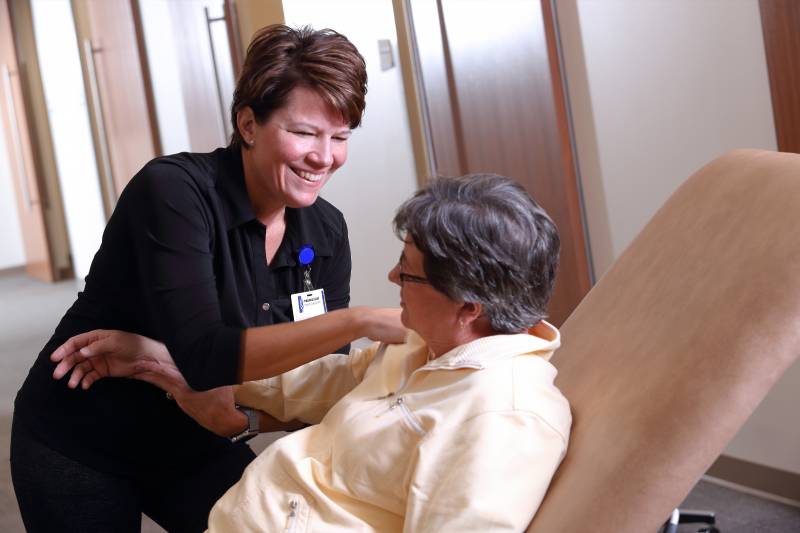Jack Hughes
Monday, November 18, 2019
Vocal Cord (Fold) Paralysis
Vocal cord paralysis and paresis can result from abnormal function of the nerves that control your voice box muscles (laryngeal muscles). People have one set of two vocal cords, also known as vocal folds, that work together in your voice box to produce sound. They open when you breathe in to let the air flow through your lungs, and they close and vibrate when you speak (this is called phonation).To produce adequate voice, both vocal cords should move toward each other and close completely to vibrate together (this is called glottic closure).
Published in
ENT Health Resource Library
Tagged under
Monday, November 18, 2019
Tonsillitis
Tonsillitis, also described as pharyngitis, refers to inflammation of the pharyngeal tonsils, which are lymph glands located in the back of the throat that are visible through the mouth. Typically, tonsillitis happens suddenly (acute). Some patients experience recurrent acute episodes of tonsillitis, while others develop persistent (chronic) tonsillitis.
Published in
ENT Health Resource Library
Tagged under
Monday, November 18, 2019
Thyroid Nodules
A thyroid nodule is an area of abnormal growth within the thyroid. The thyroid is a butterfly-shaped gland located at the base of the front of the neck. It produces thyroid hormone, which controls your metabolism, temperature regulation, and keeps your muscles and organs working properly. Diseases of the thyroid, whether functional (hypothyroidism, hyperthyroidism) or structural (nodule, goiter, cancer), occur very commonly. Some people have a single nodule while others have multiple nodules within the gland. Thyroid nodules, which are particularly common in women, can be tiny to very large in size.
Published in
ENT Health Resource Library
Tagged under
Monday, November 18, 2019
Thyroid Cancer
The thyroid is a butterfly-shaped gland located at the base of the front of the neck. It produces thyroid hormone, which controls your metabolism, temperature regulation, and keeps your muscles and organs working properly. Thyroid cancer is very common, particularly in women. It is now one of the most common cancers found in women. Most forms of thyroid cancer are slow growing and well-treated with surgery and sometimes other therapies.
Published in
ENT Health Resource Library
Tagged under
Monday, November 18, 2019
Post-nasal Drip
Mucus is normally swallowed unconsciously, but when there is a feeling of the mucus gathering in the throat or dripping from the back of your nose, it is called post-nasal drip. Glands in your nose and throat continually produce mucus, normally one to two quarts per day. Mucus moistens and cleans the nasal lining, moistens air, traps and clears what is inhaled, and helps fight infection.
Published in
ENT Health Resource Library
Tagged under
Monday, November 18, 2019
Pediatric Sinusitis
Sinusitis (rhinosinusitis) in children can look different than sinusitis in adults. More often, children have a cough, bad breath, crankiness, low energy, and swelling around the eyes, along with a thick yellow-green nasal or post-nasal drip.
Published in
ENT Health Resource Library
Tagged under
Tuesday, October 22, 2019
Lymphedema Management
Lymphedema is an accumulation of lymphatic fluid in the tissue that causes swelling, most often in the arms or legs, and occasionally in other parts of the body. Lymphedema can develop when lymphatic vessels are missing, impaired, removed or damaged.
When the impairment becomes so great that the fluid exceeds the lymphatic transport capacity, an abnormal amount of protein-rich fluid collects in the tissues of the affected area. Left untreated, this stagnant, protein-rich fluid reduces oxygen availability in the affected area, interferes with wound healing, and provides a culture medium for bacteria that can result in infection.
Symptoms of Lymphedema
Lymphedema can develop in any part of the body or limbs. Signs or symptoms to watch for include:
- A full sensation in the limb
- Skin feeling tight
- Decreased flexibility in the hand, wrist or ankle
- Difficulty fitting into clothing in one specific area
- Ring/wristwatch/bracelet tightness
If you notice persistent swelling, it is very important that you seek immediate medical advice. Early diagnosis and treatment improves both the prognosis and the condition.
Treatment for Lymphedema
Therapy staff members at Prairie Lakes Healthcare System are specially trained and certified in Manual Lymph Drainage and Complete Decongestive Therapy techniques. They will develop an individualized treatment plan to aid in the reduction of lymphedema in the area, assist in obtaining supportive garments and instruct you how to manage this illness better. It is recommended that if lymphedema symptoms occur to contact your physician, who will help you determine if rehabilitation services are necessary.
For further information or to make an appointment, please call 605-882-7700.
Published in
Occupational Therapy
Tagged under
Wednesday, October 16, 2019
Nosebleeds
Nosebleeds (called epistaxis) are caused when tiny blood vessels in the nose break. Nosebleeds are very common and affect many people at some point in their lives. In the United States, one out of every seven people will develop a nosebleed in their lifetime. They can happen at any age, but are most common in children around the ages of two to 10, and adults around the ages of 50 to 80. Children can have nosebleeds during sleep.
Published in
ENT Health Resource Library
Tagged under
Wednesday, October 16, 2019
Hoarseness
Hoarseness (also called dysphonia) is an abnormal change in the quality of your voice, making it sound raspy, strained, breathy, weak, higher or lower in pitch, inconsistent, or fatigued, often making it harder to talk. This usually happens when there is a problem in the vocal cords (or folds) of your voice box (larynx) that produce sound. Your vocal cords are separated when you breathe, but when you make sound, they come together and vibrate as air leaves your lungs. Anything that alters the vibration or closure of the vocal cords results in hoarseness.
Published in
ENT Health Resource Library
Tagged under
Wednesday, October 16, 2019
Head and Neck Cancer
Each year, more than 55,000 Americans will develop cancer of the head and neck (most of which is preventable). Nearly 13,000 will die from cancer of the head and neck. Head and neck cancers are curable if caught early. Fortunately, most of them produce early symptoms. You should know the potential warning signs so you can alert your physician as soon as possible. Successful treatment of head and neck cancer depends on early detection. Knowing and recognizing its signs can save your life.
Published in
ENT Health Resource Library
Tagged under
We See You living your life
And we're here for you with the latest technology and medical expertise you need to live your best life possible.
Orthopedics
Glacial Lakes Orthopedics is now Prairie Lakes Orthopedics.
Join Our Team
Over 600 staff members and 200 volunteers make our regional healthcare system one of the top rural health systems.
Available Services
Prairie Lakes Healthcare System offers a wide range of medical services for people who call northeastern South Dakota and western Minnesota home.
Surgical Services
Our team is here for urgent procedures like appendix removal and scheduled surgeries like joint replacement.
Dermatology
Feel good about your skin’s health. Our specialists offer individualized treatment plans and cosmetic options.
We can help you find a doctor. Call 605-882-7000 or search online.





